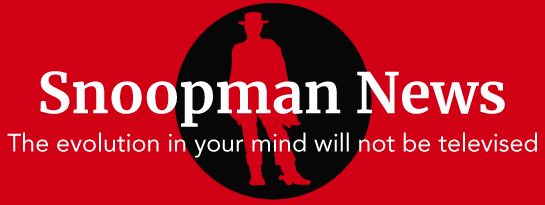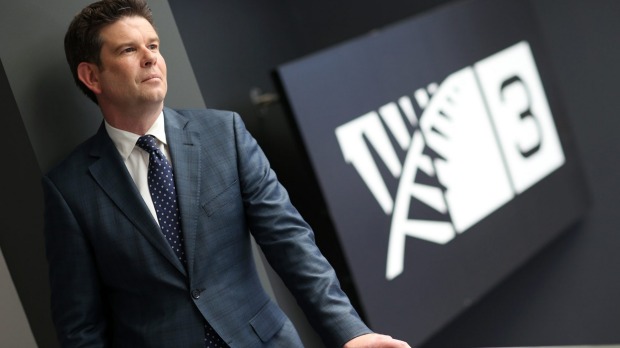Corporate Bears at-large: John Campbell’s sense of fairness is at odds in a ‘free market’ society where political apathy was imported from the United States in the mid-1980s.In Part II of this editorial, Sophia Bigg-Storm and Snoopman find that exponents to the Cult of World Domination, ‘The Illuminati’, are behind the universal ‘shit’ state of news and current affairs in ‘the West’. They argue that dying breeds such as current affairs program Campbell Live can only avert their extinction if ‘zoned out people’ demand the exposure of ‘the Illuminati’ and reporters are brave enough to practice muck-raking journalism. But, because most adults are babies trapped in grown-ups bodies, and are too scaredy-cat to learn about ‘The Illuminati’, the only course of action is for the rest of us to shake such babies out of their systemically imposed apathy and sissyness.
By Sophia Bigg-Storm and Snoopman
Part II: Why a Few Corporate Bears Hated on Democracy and Sought Buy-in from Major Media Outlets and Why Balls are Required to Confront the Corporate Bears
UPDATE: Campbell Live‘s ratings surge appears to have complicated MediaWorks’ moves to dump Campbell Live (See Part I: Sexing Up Current Affairs or Manufacturing Soap?), or remake it into Campbell Live Lite. John Campbell was offered a co-hosting role, which is a standard ‘free market’ era job re-structuring move, akin to a schoolyard knee in the groin. John Campbell’s resignation was announced on 21 May 2015.
Too Much Democracy
The ‘outrage’ over the possibility that current affairs program Campbell Live might be scuttled has prompted discussion over the “over-commercialized” and “deregulated” mediascape in New Zealand. It has been suggested that New Zealanders have “a right as citizens to a robust fourth estate and news and current affairs that holds those on [sic] power to account.”
But, the suggestion that ‘the government’ or ‘the Key Ministry’ ought to act responsibly in the public interest and “explore how it might establish a multi-platform, public service free-to-air channel to provide genuine diversity and quality in the digital era” is essentially asking the ruling class to expose itself to better scrutiny. Power never yields what it has accumulated to itself simply by being asked to play nice.
Here, we sketch how the gutting of newsrooms is very much tied to successive New Zealand government’s submission to the ‘free market’ economic framework imported in 1984, in accord with the country’s oligarchic (or super-rich) families buy-in with a global domination plan set by a North Atlantic capitalist class. (The core of this class, now transnational in scope, have dominated the North Atlantic powers for more than a century have been variously described as the Fraternity, the Committee of 300, the Grid, the Syndicate, or the Illuminati, and adhere to the Cult of World Domination).
The reasons for the commercial pressures on TV current affairs to be more ‘entertaining’ (or boring, if you’re in a rest-home) and the corresponding deregulation of the media, can be traced back to the early 1970s when the North Atlantic Capitalist class decided there was too much democracy. Elite policy-makers working on behalf of the super-rich Euro-American oligarchy (aka The Illuminati) at global policy-shaping think-tanks such as the Council on Foreign Relations and the Trilateral Commission, strategized to undermine the ‘offending’ counter-cultural/peoples’ movements of the 1960s and 1970s.
The emergence of ‘too much democracy’ in the 1960s was known in posh elite circles as a ‘governance crisis’.[i] This ‘Crisis of Democracy’ coincided with several other major crises. One crisis that beset the Patriarchy was The Crisis of Declining Profit Rates. This crisis arose from the overcapacity of production, and became a most ‘serious crisis’ for the dominant corporations of the North Atlantic capitalist class (particularly the United States and Britain, who had only partially re-tooled in the years since World War II). It was a most ‘serious crisis’ because there is only one thing that can “kill [a] bloodless legal construct” – the Corporation – and that is an inability to extract a financial surplus (as Thomas Kessner put it in his book Capital City). It was a crisis of the Patriarchy’s own making, since the North Atlantic capitalist class had sought to dominate the post-World War II World.
To ‘solve’ these crises, a special study group was sponsored in the early 1970s by the Council on Foreign Relations in New York to work on what they called the ‘1980s Project’. The ‘1980s Project’ Study Group worked out a blueprint for the transformation of economies around the globe under the rubric of ‘free market’ economic policies[ii]. The 1980s Project prescribed a new alliance between the wealthy and politically connected Corporate Bears of America and Europe to include Baby Corporate Bear, Japan.
To this end, the Trilateral Commission was formed. The Trilateral Commission was tasked with working out how to technically deploy the ‘free market’ framework and preserve as far as possible the dominance of their Trilateral World, as Laurence Shoup and William Minter have argued in their seminal book, Imperial Brain Trust.
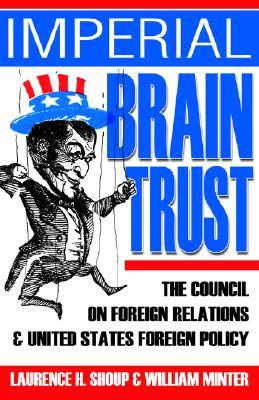
In the ‘governance crisis’ discourses of the time, it was considered vital for the success of the 1980’s Project that apathy be created among the mass populaces of the world. It was deemed crucial by the elite policy planners at the Council on Foreign Relations to “depoliticize” important issues and remove them from popular political consciousness. Indeed, one task force group in the ‘1980’s Project’ was to focus on ways to downplay political-economic conflicts, including unemployment, inflation and international relations. Audaciously, “The Crisis of Democracy” report by the Trilateral Commission claimed that popular demands on governments were overwhelming authorities to address various crises. Furthermore, governance itself was facing a Crisis of Legitimacy!
The stratagem to undermine too much democracy contained in the 1980’s Project, which essentially sought to demoralize mass populaces (both in the ethical sense, as well as the motivational one), was therefore a devious one. Indeed, the ‘free market’ framework that was worked upon by the 1980’s Project Study Group and elite planners at other right-wing corporate-funded global and national policy-shaping think tanks, (which proliferated in 1970s) came packaged with a cover-story to hide the real intent.
‘Free markets’ were slickly marketed in the 1980s and 1990s with the idea that they would deliver individual freedom and prosperity for all, as Naomi Klein argued in her book, The Shock Doctrine: The Rise of Disaster Capitalism. The North Atlantic capitalist class favoured a ‘shock therapy’ approach that exploited speed, suddenness and scope as key concepts. In this way, targeted populations were overwhelmed with the economic shocks as whole sectors of society were transformed and coerced to support the new framework. These ‘free market shock treatments’ included lifting financial controls to increase the fluidity of capital flows between countries, the corporatization and privatization of state infrastructure and services, the introduction of user charges, shifting the tax burden ‘downward’, and down-sizing public sector employment. This shock doctrine was, in fact, a structured set of ‘new enclosures’ that were designed to absorb the needs, values and aspirations of the ‘disobedient’.
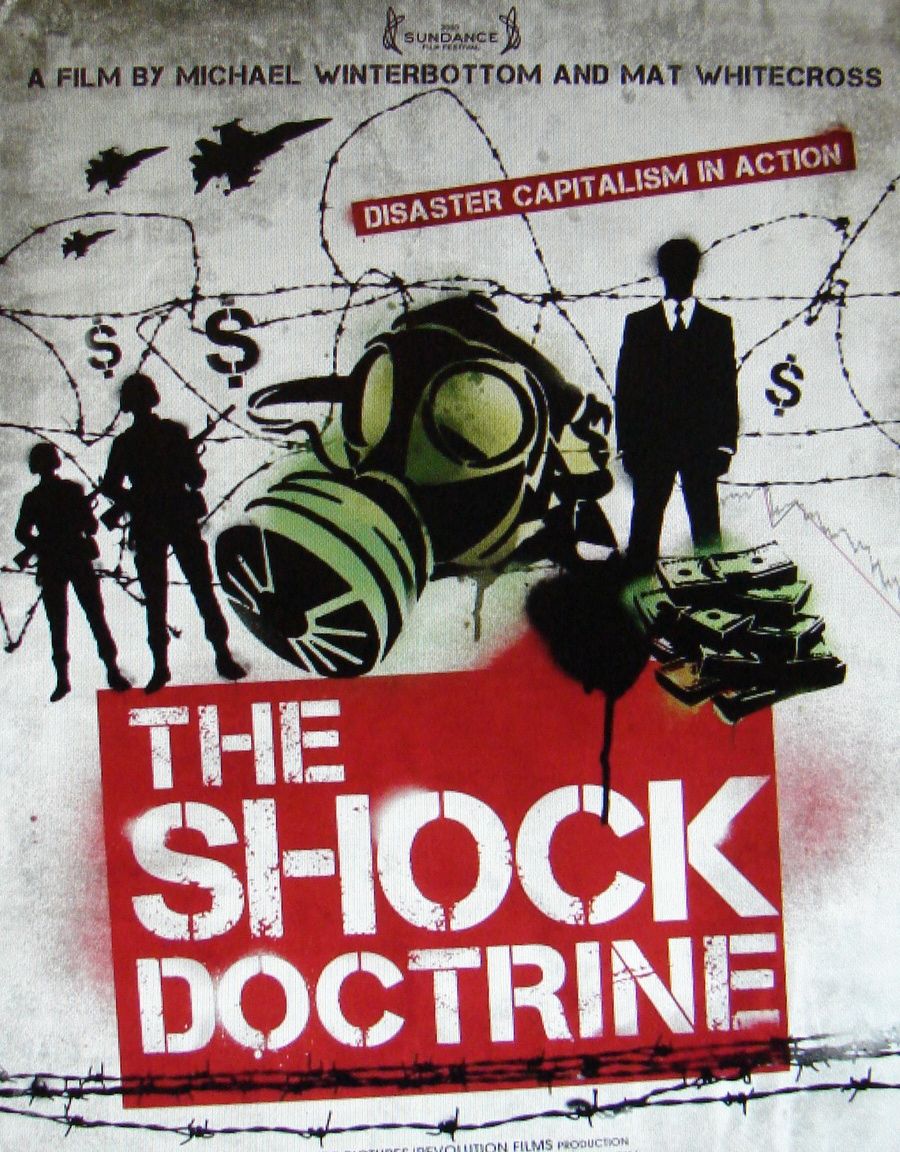
The Shock Doctrine is the denied part of the global neo-colonial project. During the field-testing stage of ‘free markets’ in the mid-1960s to mid-1970s, US-backed terrorism was required to clear opposition for the ‘free market economic shock treatments’ that followed. Five countries – Brazil, Indonesia, Chile, Uruguay and Argentina – pursued a developmentalist economic framework and were all subjected to military juntas and/or CIA-backed coups. In the Chilean case, General Augusto Pinochet’s CIA-backed coup of September 11 1973 was ordered by US National Security Adviser Henry Kissinger, who viewed president Salvador Allende’s socialist government as a “contagious example”, because he had nationalized key infrastructure and resources, owned by American and Chilean corporations. But, these ‘developmentalist’ countries were not the only ones in need of ‘free market’ discipline.
Henry Kissinger had already conspired to foment a bolder shock treatment that would reverberate around the world. Together with his close accomplices, the chairman of the Council on Foreign Relations, David Rockefeller and Columbia University professor Zbigniew Brzezinski, Kissinger attended the May 1973 Bilderberg meeting at the island resort of Saltsjöbaden, owned by the Swedish Wallenberg banking dynasty, to discuss a plot to trigger oil price shocks, which would return enormous profits for key banks and the oil majors, including Rockefeller’s Chase Manhattan Bank and the Standard Oil cartel. (These shocks would also reinvigorate the indebted US dollar, through which oil was traded universally). The Bilderberger Nexus Oil Price Shocks of 1973-1974 were anticipated to cause a 400% hike in oil prices, according to the 1973 Saltsjöbaden Bilderberg Meeting Report. The Oil Price Shocks caused an inflationary spiral in the cost of energy and transportation, that in six years to the end of 1979 had risen by 1300%, according to William Engdahl in A Century of War: Anglo-American Oil Politics and the New World Order.
In keeping with the anti-competitive behaviour of cartels, Henry Kissinger explained at one session of a US Federal Staff Energy Seminar, (which ran for four years), that the US was seeking to “create a world price for oil”, according to former US Air Force Colonel L. Fletcher Prouty. This ‘energy crisis’ served as a pretext for the Wall Street-Washington-City of London Complex to increase the cost of credit to 20% (amid runaway inflation), and when combined with the underlying Bilderberg Nexus-induced economic crisis, a world debt crisis emerged. Thus, the ‘deep state’ oil price shocks laid the groundwork for further ‘free market economic shock therapies’, which were themselves mechanisms of coercion, because all governments and sectors of society were thrown further into crisis. Everyone suffered, except key insiders, who became richer and accumulated more political power.
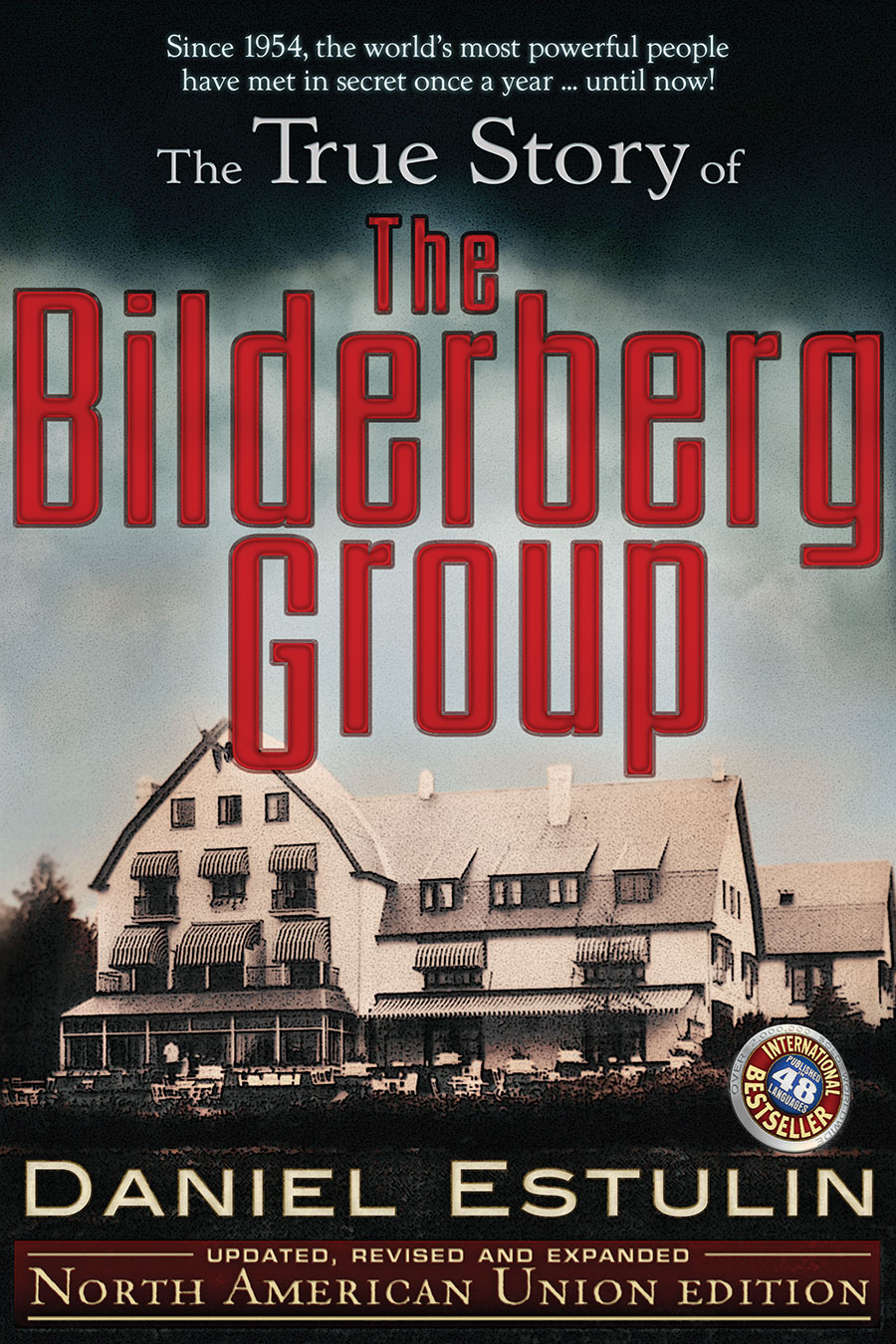
This counter-revolution, amply detailed in The Shock Doctrine, which sought to establish a ‘new world economic order’ between America, Europe and Japan, was designed to usurp the sovereignty of national governments through incremental changes rather than the frontal assaults of the past. By joining forces with oligarchs from Japan, the Trilateral Commission’s task was to drive the roll-out of the “1980’s Project”, which included globalizing neo-liberal ideology, in order create a worldwide technocratic system. At face value, a technocracy suggests a benign economic system that allocates energy and resources equitably through quotas, rather than through capitalism’s current price system.
However, the Greek root words from which ‘technocracy’ is derived, suggests a form of government run by technocrats. The word technocracy is a construction of the root Greek words “techne” or skill and “kratos” or rule. Technocracy, which promises economic freedom was theorized during the Great Depression of the 1930s, principally by a University of Chicago-trained geologist, Marion King Hubbert. Although a technocratic form of totalitarianism is a system of government administered by scientists, engineers and technicians, it is controlled by unseen oligarchs, or super-rich puppet masters. In essence, a corporatized totalitarianism is driving the construction of a worldwide technocratic system.
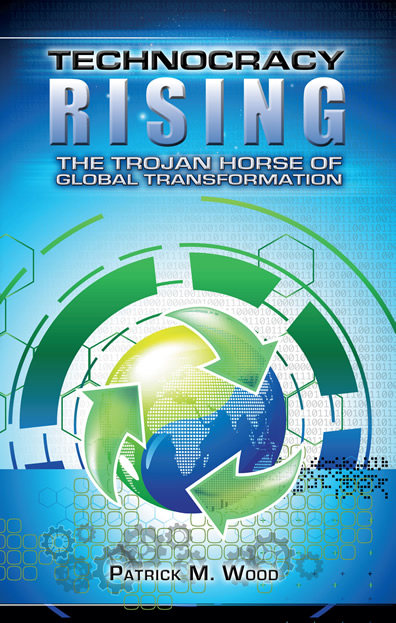
By globalizing neo-liberal ideology (or the cover-story used to promote ‘free market’ reforms), the global reformers intended to avoid risky military coups in developed civil oligarchies, or western democracies, where overt state-sponsored violence would likely cause the collapse of governments.[iii]
The Importance of Earnestly Starving ‘Just Left Democracy’
In a classic ‘bait and switch’ manoeuvre, the masses were offered freedom and prosperity in the future if they gave up their demands for social justice, political rights and decentralized access to economic resources in the present. Their movements, such as Social Justice, Environment, Peace, Anti-War, Developmentalism, were to be managed by the ‘market forces’ and the administrative system of the Transnational Capitalist Class: Just Right Democracy. The intention that underpinned the marketing of ‘free markets’ was to deceptively lure the world’s mass-hapless populaces into orphaning their ‘newly-born movements’, which were left to struggle as Just Left Democracy. It was, therefore, a poorly understood ‘bargain’.
In other words, key insiders that comprised the North Atlantic capitalist class set a course to transform the world under a ‘free market’ framework in order to impose ‘market discipline’. The ‘North Atlantic capitalist class downplayed the hardships that their ‘reforms’ would impose. Together, ‘Capital’ and ‘Liberty’ – Patriarch and Matriarch of the Shock Doctrine Family – disingenuously claimed that everyone would prosper and through this promised prosperity, they would somehow gain ‘freedom’.[iv]
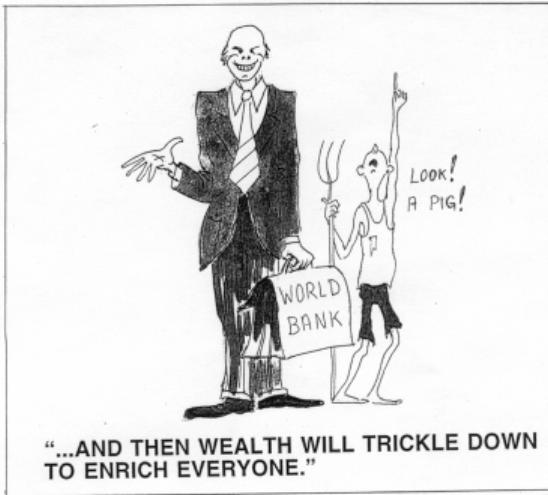
So, this planning for systemic apathy began in the early-to mid-1970s, because the ‘counter-cultural revolution’ that appeared in the 1960s was regarded by a North Atlantic capitalist class as an affront to their perceived right to permanently rule the planet. Gullible New Zealanders, who often self-identify as ‘Kiwis’, because they have been conditioned that way by New Zealand’s ruling class, need to see that current affairs (and news) is regressively dumbed down not due to the surface effect “because people want light entertainment”, as the current title holder of New Zealand prime minister would have them believe. It’s therefore ironic that ‘Kiwis’ relate to an endangered flightless national bird of the same name that failed to perceive that in the future it would be really useful if they could still fly away from danger. As such, ‘Kiwis’, or non-magical muggles and hobbits, under the spells of ‘Nice Guy’ Key need to recognize that this manufactured systemic apathy is the deeper reason for the “more more breezy, magaziney show”, which describes the resultant phenomena or effect.
The promotion of neo-liberal policies to justify the transformation of the financial system required the alignment of news media institutions with the dominant capitalist coalitions, which took shape amidst the economic and political crises of the 1970s and 1980s. At that time, there was critical discussion in the news media about the criminal activities of large corporations.[v] Consequently, the image of capitalism required a makeover. This task required a concerted sales effort with buy-in from academia, advertisers and a cottage public relations industry,[vi] as well as massive mergers between media conglomerates, initially taking place in the United States and the United Kingdom
The transformation of the American and British mediascapes into more concentrated, tiered systems of ownership required the collusion of their governments, regulatory authorities and international rule-setting institutions. These institutions incrementally lifted restrictions on cross-ownership stakes within the same markets, across national territorities and between media outlets and non-media firms, including telecommunications companies. This also facilitated the corporatization and privatization of state media systems and made it possible for vast transnational media conglomerates to form.[vii] From the perspective of stockholders, and performance-tied directors, every media organization was a business. Measures such as cost cutting, expanded advertising space and shorter stories initiated by news outlets to keep profitability up, encouraged investors to pursue amalgamations.[viii]
By 2001, the convergence between media platforms and telecommunications carriers through mergers, acquisitions, joint ventures, direct investments and partnerships had created seven massive transnational media conglomerates that dominated the global media system.[ix] Of these seven global media conglomerates – Time Warner, Disney, NewsCorp, Bertelsmann, NBC Universal, CBS and Viacom – six controlled more than half of media properties in the United States and owned substantial news holdings (as of early 2008).[x]
These ‘big 7’ sit atop a three-tiered global media system. The second tier is comprised of about 60 to 70 firms and a third tier, comprised of thousands of firms, produces media either for the larger companies, repackages the content for resale or reinterpretation or works more independently.[xi] The giant media corporations and second-tier media groups created ‘economies of synergy’ to mass-produce an apparent ‘diversity’ of content that could be delivered across multiple communication platforms as a means to reduce costs and maximize revenues.[xii]
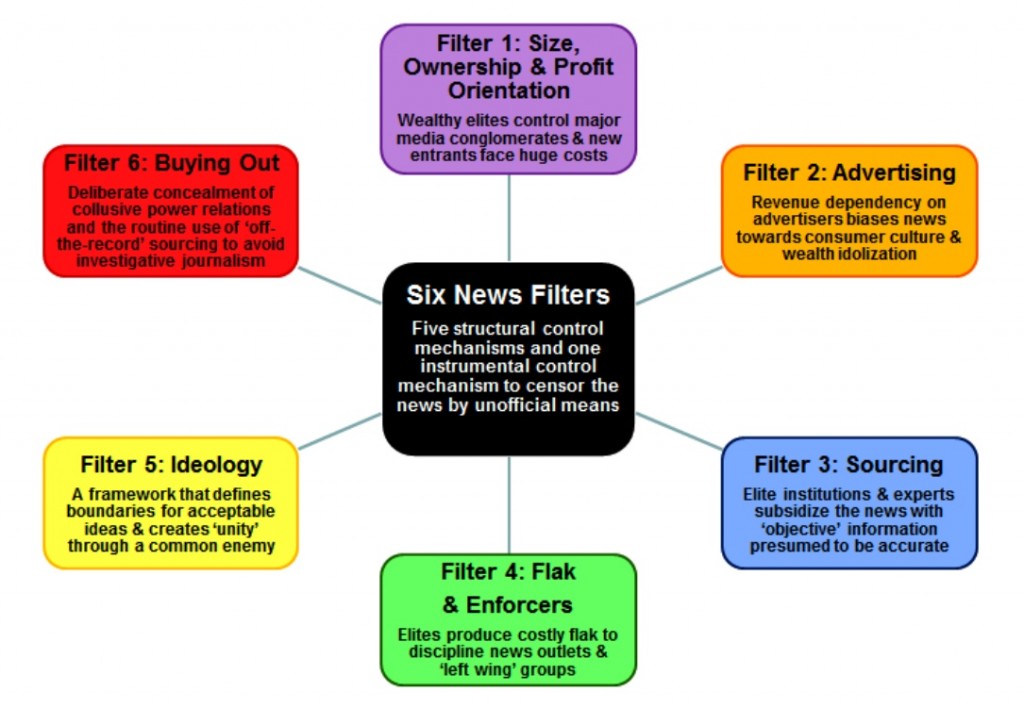
This concentrated media system projected an appearance of dispersed control through the complexity of syndication, affiliation, inter-medium synergies and merchandizing licenses. However, big media corporations constantly buy and sell smaller competitor media businesses and new market entities as control strategies. Although wealthy individuals and family dynasties owned large stakes in some corporations at the beginning of 2008, shareholdings by institutional investors have been on the rise.[xiii]
Institutional investors force media enterprises to become more market-driven and therefore more sensitive to the trajectory set by such investors. This is especially so because the mergers and acquisitions were often financed, either by shares, whose prices were over-inflated, especially in the case of mergers; or by debt.[xiv] Institutional investors are able to leverage their collective interests as a transnational investment class through their shareholding stakes, board presence, and networked power in media cartels. This enables the monitoring of political, legal and technological developments, issues and oligarchic-elite networks.[xv]
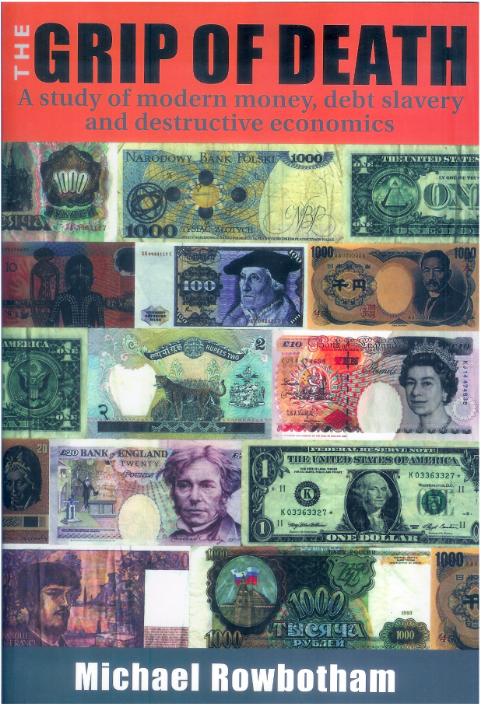
But, key to selling a positive image of corporate capitalism to society, couched in ‘free market’ rhetoric, was the employment of public relations to promote the global interests of financial capitalists.[xvi] At this point, it is critical to understand that capitalism is a private political system that uses economic means to control society by limiting people’s access to land (and other resources), as Frances Hutchinson argued in, What Everyone Wants to Know About Money and The Politics of Money, and as Jonathan Nitzan and Shimson Bichler presented in their book Capital as Power. This political control is primarily achieved through a deliberate scarcity of cash and an abundance of credit/debt, as Michael Rowbotham showed in his book, The Grip of Death: A Study in Modern Money, Debt Slavery and Destructive Economics.
This scarcity of debt-free cash is controlled by the dynastic banking families, such as the Rockefellers, the Morgans, the Rothschilds, the Warburgs, the Schröders, the Schiffs, the Vanderbilts, the Wallenbergs, the Stillmans, and the Lazards. It is the wealthiest that own the major banking cartels that, in turn, have come to control the governments of the world through coercion. By gaining control of credit creation over several centuries, through military, economic and psychological warfare, dynastic banking families have captured states that are forced to borrow to meet revenue shortfalls.

Thus, from the perspective of the super-rich, the public and private sectors are viewed as two divisions of capitalism, and democracy as its administrative system.[xvii] Together, oligarchs steer the trajectories of whole societies.
Too Much Same Ol’ Newsroom Model
The present politically-safe harmonised news and current affairs programmes are not simply an unintended result of a “deregulated” and “over-commercialised” free market mediascape. It is the consequence of the New Zealand oligarchy’s (and its government) buy-in to a well-designed blueprint called the ‘1980s Project’. Crucially, when the 1980s Project Study Group planned their ‘free market’ reforms blueprint at the New York-based global-policy-shaping think-tanks, the Council on Foreign Relations, they factored in the need to discourage political dissent. Their idea to spread what we have termed systemic political apathy was intended to lower resistance to the coming economic shock treatments. For this plan to succeed, the newsrooms of major media outlets needed to be gutted through ‘market discipline’.
The inconvenient truth of New Zealand’s mainstream media is that the super-rich owners, the executives, big advertisers (who are the big-daddy bucks primary audience), and pro-corporate editors, producers, and reporters do not want naive Middle New Zealand to think about the fact that the economy of New Zealand is dominated by just four media corporations. These are: Fairfax Media, Sky TV & Prime, MediaWorks, APN News and Media. While TVNZ dominates on the state-owned side, it is also funded by big corporate advertisers, as well as tax-funds. These five media conglomerates reproduce the sanitised narratives of the transnational capitalist class, and in particular, the dominant ideological views of the Illuminati (or the West’s Cult of World Domination).
By tabling the soap opera option as one possible replacement to the prime time current affairs program Campbell Live, we find that MediaWorks management is signaling to other dominant capitalist coalitions that it is ‘advancing the game’. This ‘game’, as we have outlined, is to prioritize the interests of the investment class over sissy liberal considerations such as investing in investigative journalism. This ‘game’ precludes a revamping of the universal Same Ol’ newsroom model that could seriously challenge the North Atlantic capitalist class (now transnational in reach) responsible for the conspiracy to discipline the world through ‘free market economic shock treatments’ for daring to challenge their power in the 1960s and 1970s.
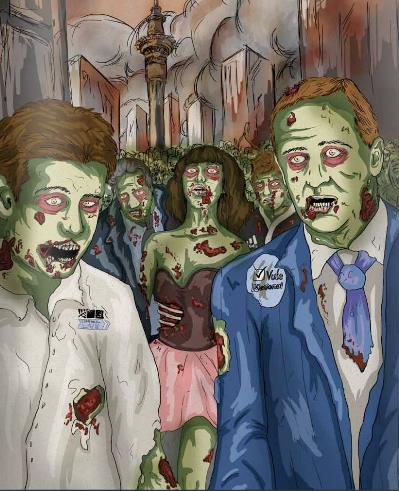
We also find that due to the strictures of professionalism – journalists can be oblivious to the broader, networked structures of power.[xviii] Most journalists are unwitting puppets, whose strings are being pulled by forces beyond a stage so big they cannot perceive its enormity, complexity and deviousness.
The appraisals that New Zealand’s news and current affairs are over-exposed to commercial pressures, and need stronger regulation and publicly-fund multimedia media platforms all fall short of the deeper power crimes of collusion and conspiracy outlined here. As such, to ask the New Zealand government to provide a media mechanism to better hold those with power (including itself) to account is like an unarmed person asking the mafia to stop using guns. It only works if everyone asserts what the common deal-breakers are and share a common vision at the same time. And with the ‘power of community’ expressed simultaneously, their solidarity overcomes the self-absorbed, bully psychopaths who would be forced to realise their Spell of Fear over people has collapsed. In short, what is needed is ‘people power’ sustaining a ‘crisis of legitimacy’ for the self-appointed ruling classes.
To this end, we recommend a new newsroom model to replace the Same Ol’ TV newsroom model that proliferated around the Western World at a time when the new medium of television rose to displace newspapers, radio and magazines as the dominant vectors of propaganda. It is critical to the survival and bona fide freedom of the human species that this new newsroom model makes as its first priority the retraction of the propaganda spread about the major news events of the last century, including the reasons for World War I, World War II and the terrorism conducted by the North Atlantic Alliance since the formation of NATO. As such, we call this holisitic newsroom model NewsWhole.
Newsrooms utilizing the NewsWhole model would, therefore, prioritise major news stories, thereby shoving out trivial matters that lack national and international importance, particularly sport which is not news, but a distraction as the documentary Manufacturing Consent makes clear. An effective new newsroom model, NewsWhole would utilize network analysis software, as used by scholars working in the field of transnational capitalist class studies, to map the orbits of wealth, influence and power among elites and oligarchs. It is envisioned that this new newsroom model would utilize the physical interior wall space of news networks to track the trajectory of key power groupings across time and key events of history, and critically interrogate unfolding narratives.
We also find that “[p]eople [are] zoning out” because they have been conditioned by the ruling class to be apathetic, emotionally and politically immature, scaredy-cat sissies. We need to reversion the ‘Never Shake a Baby’ advertising campaign of a few years ago, to raise awareness that babies in grown-ups bodies need to be shaken into Giving a Shit (G.A.S.). In the course of performing SBT-GUBs (Shaking Babies Trapped in Grown-ups Bodies), such unfortunates may even have an epiphany (AKA a deep realization) that the most scaredy-cat people on the planet are, in fact, the psychopaths running the world.
Because ‘The Illuminati’ are very clever, well-resourced psychopaths that have passed on their power and wealth for generations, they are able project their confidence as like a spell over humanity. But, like all psychopaths, what they fear most of all is everyone seeing them for who they truly are: cruel, conniving, creepy criminals.

‘The Illuminati’ are, in effect, ‘Free Market’ Zombies. Because they are still at-large Zombie entities, these ‘Free Market’ Zombies are more difficult to kill off than a current affairs show, especially as the ‘free market’ Zombie infection spreads through the host population. Difficult, but not impossible. As we pointed out in Part I: Sexing Up Current Affairs or Manufacturing Soap?, a group of mathematical and computer science students found in their study of zombie outbreaks, “When zombies attack! Mathematical modeling of an outbreak of zombie infection”, the best way to kill off zombies is to hit them hard and often.[xii]
So, if the mass populaces of the world found the balls to learn about how power is really wielded by ‘the Illuminati’ and their henchmen, such ordinary people-beings can be provoked into joining the G.A.S. company. That is, to Give a Shit and join a mass movement to help bring a very necessary mutiny in our institutions, worldwide.
Without such a mutiny, the brave hearts of Television Land will die out, or get bitten and join the ‘Undead’ as zombie media missionaries, who will have everyone thinking everything is DoublePlusGood.
======================================
See also: The $4 Million Newsroom: Crowd-funding a new newsroom model that has ‘The Shit’ https://snoopman.net.nz/?p=2918

======================================
Source References:
[i] John Coleman (1992). Conspirators’ Hierarchy: The Story of the Committee of 300. America West Publishers. Engdahl, W. (2004). A Century of War: Anglo-American Oil Politics and the New World Order (Rev. ed.). London, England: Pluto Press; Engdahl, F. W. (2009). Gods of Money: Wall Street and the Death of the American Century. Wiesbaden, Germany: edition.engdahl; Nicholas Hagger (2004). The Syndicate: The Story of the Coming World Governmnet. Winchester, UK: O Books; Charles Higham (1983). Trading with the Enemy: The Nazi-American Money Plot 1933-1949 (1983). Delacorte Press; Dean Henderson (2011). Big Oil & Their Bankers in the Persian Gulf: Four Horsemen, Eight Families & Their Global Intelligence, Narcotics & Terror Network. Bridger Hosue Publishing; Preparata, Guido Giacomo. (2005). Conjuring Hitler: How Britain and America Made the Third Reich. London: Pluto Press; David Allen Rivera (2010). Final Warning: A History of the New World Order. USA: Progressive Press; Estulin, D. (2009). The True Story of the Bilderberg Group, 183-184. (North American Union ed.); Perloff, J. (2008). The Shadows of Power: The Council on Foreign Relations and the American Decline. Appleton, WI: Western Islands. Originally published in 1988; Pilger, J. (2002). The New Rulers of the World. London: Verso; Pilger, J. & Lowry, A. (2001). The New Rulers of the World. Carlton Television; Whitecross, M & Winterbottom, A. (Directors) & Eaton, A. (Producer). (2009). The Shock Doctrine. [Motion picture]. A Renegade Pictures/Revolution Films Production. Retrieved from http://www.youtube.com/watch?v=7iW1SHPgUAQ; Wintonick, P. (Director/Producer) & Achbar, M. (Director/Producer). (1992). Manufacturing Consent: Noam Chomsky and the Media [Motion picture]. Canada: Necessary Illusions.
[ii] “A Poorly Understood ‘Bargain’: How Democracy and the 60s Movements became Orphans in the ‘Free Market’ Era” https://snoopman.net.nz/2013/08/31/a-poorly-understood-bargain-or-how-democracy-and-the-60s-movements-became-orphans-in-the-free-market-era/
[iii] Code Purple: Whistle Blowing on ‘Free markets’, the ‘Shock Doctrine’ and ‘New Constitutionalism’ at” https://snoopman.net.nz/2014/03/10/code-purple/; Missing in News-action: Confronting ‘Deep State’ Power Crimes at: https://snoopman.net.nz/2014/05/17/when-black-things-propel-us/; A Poorly Understood ‘Bargain’: How Democracy and the 60s Movements became Orphans in the ‘Free Market’ Era” https://snoopman.net.nz/2013/08/31/a-poorly-understood-bargain-or-how-democracy-and-the-60s-movements-became-orphans-in-the-free-market-era/
[iv] Missing in News-action: Confronting ‘Deep State’ Power Crimes at: https://snoopman.net.nz/2014/05/17/when-black-things-propel-us/
[v] A Poorly Understood ‘Bargain’: How Democracy and the 60s Movements became Orphans in the ‘Free Market’ Era” https://snoopman.net.nz/2013/08/31/a-poorly-understood-bargain-or-how-democracy-and-the-60s-movements-became-orphans-in-the-free-market-era/
[vi] Tumber, H. (1993). ‘Selling scandal’: Business and the media. Media, Culture & Society, 15, 345-361. doi:10.1177/016344393015003002
[vii] Robert McChesney, John Bellamy Foster, Inger Stole and Hannah Holeman (2009) argued that a ‘sales effort’ was more than simply advertising. The ‘sales effort’ reached into the production process, so that products were designed to be highly marketable (p.5). They argued this ‘sales effort’ was harmful for society because professional journalism obscured the influence of concentrated media ownership and large corporate advertisers. This meant that news outlets eschewed context and instead promoted the creation of market bubbles which undermined democracy (p.5, 11). I use the term ‘sales effort’ more broadly to encompass the activities of the news media and media outlets to promote financial capitalism, through advertising and the recruitment of expert sources.
[viii] Arsenault, A. H. & Castells, M. (2008). The structure and dynamics of global multi-media business networks, International Journal of Communication, 2, 708-709;. Retrieved from http://ijoc.org/ojs/index.php/ijoc; Chan-Olmsted, S. M. & Chang, B. H. (2003). Diversification strategy of global media conglomerates: Examining
its patterns and determinants, p. 223. Journal of Media Economics, 16(4), 213-233. Retrieved from http://www.asc.upenn.edu; Cowhey, P. F. (1990). The international telecommunications regime: The political roots of regimes for high technology. International Organization, 44, 169-199. Retrieved from http://journals.cambridge.org/action/displayJournal?jid=INO; Crain, M. (2009). The rise of private equity media ownership in the United States: A public interest perspective, p. 230. International Journal of Communication, 3, 208-239. Retrieved from http://ijoc.org/ojs/index.php/ijoc;
Herman, E. S. & Chomsky, N. (2008). Manufacturing Consent: The Political Economy of the Mass Media (Anniversary ed.). London, England: The Bodley Head. (Original work published 1988); McChesney, R. W. (1999). “The Political Economy of Global Communication.” p.1-26. In: McChesney, Wood & Foster. Capitalism and the Information Age: The Political Economy of the Global Communication Revolution. New York: Monthly Review Press.
[ix] Bagdikian, B. (2004). The New Media Monopoly. Boston, MA: Beacon Press; See also: Chapter 3 In: Edwards, Steve (2012). “It’s the Financial Oligarchy, Stupid” http://hdl.handle.net/10292/5536
Chan-Olmsted, S. M. & Chang, B. H. (2003). Diversification strategy of global media conglomerates: Examining its patterns and determinants. Journal of Media Economics, 16(4), p.221. Retrieved from http://www.asc.upenn.edu; McChesney, R. W. (2004). “The Political Economy of International Communications.” p. 14. In: Thomas, Pradip N. and Nain, Zaharom (Eds.). Who Owns the Media: Global Trends and Local Resistances. Penang, Malaysia: Southbound Penang.
[x] Arsenault & Castells (2008: 711, 715).
[xi] McChesney, R. W. (2004). “The Political Economy of International Communications.” p.14
[xii] Arsenault & Castells (2008: 710); Herman, E. S. & McChesney, R. W. (1997). The Global Media: New Missionaries of Global Capitalism. London: Caswell; Pappas, R. K. (Director/Writer), Blackburn, T. (Writer), Foley, M. (Producer). (2004). Orwell Rolls in his Grave [Motion picture]. USA: Buzzflash.com
[xiii] Arsenault & Castells (2008: 738); Noam, E. M. (2009). Media ownership and concentration in America, p.387. New York, NY: Oxford University Press.
[xiv] Wall Street investment banks became central players in brokering first and second-tier media mergers and acquisitions. Morgan Stanley and Goldman Sachs managed $450 billion worth of information industry mergers in 52 deals during the first three months of 2000 (McChesney & Schiller 2003: 13).
[xv] An, S. & Jin, H. S. (2004). Interlocking of newspaper companies with financial institutions and leading advertisers, p.578. Journalism & Mass Communication Quarterly, 81(3). Retrieved from http://www.aejmc.org/home/publications/jmc-quarterly/; McChesney, R. W. (2008). The political economy of media: Enduring issues, emerging dilemmas. New York, NY: Monthly Review Press; Arsenault & Castells (2008).
[xvi] Burton, B. (2007). Inside spin: The dark underbelly of the PR industry, p.3. Crows Nest, Australia: Allen & Unwin; Davis, A. (2000). Public relations, business news and the reproduction of corporate elite power, p.283. Journalism, 1. doi:10.1177/146488490000100301; Miller, D. & Dinan, W. (2000). The rise of the PR industry in Britain, 1979-1998, p.8. European Journal of Communication, 15. doi:10.1177/0267323100015001001
[xvii] Nitzan & Bichler (2009). Capital as Power.
[xviii] Edward S. Herman as cited in McChesney (1999). “The Political Economy of Global Communication.” p.1-26. In: McChesney, Wood & Foster. Capitalism and the Information Age: The Political Economy of the Global Communication Revolution. New York: Monthly Review Press.
